This is a summary of a presentation I gave in 2022
Australia’s Dietary Guidelines, last updated in 2013, are out of date and need a major overhaul, something the previous Federal Health Minister, Greg Hunt, assured Australians “will be happening soon”… The panel was announced in September 2021, and according to the website "the updated guidelines are scheduled for delivery in 2026."
I wrote an article back in 2022 titled, "Australia's Dietary Guideline Review _ Will it really change anything?" discussing The National Health & Medical Research Council (NHMRC) as being the 'gatekeeper' of Australia’s Dietary Guidelines. I spoke of my concerns with 'eight of the nine' members of the Expert Review Panel, and all five of the Governance Committee members, having either been recipients of previous NHMRC funding, involved in past/present NHMCR committees, and/or past NHMRC dietary guideline development and/or reviews. If you are interested the link is here.
The Dietary Guidelines control virtually every context in which the government has a hand in growing food and feeding people, including the responsibility for formulating menus in: -
*Hospitals & Schools
*Aged & Child Care Facilities
*Prisons & Military Bases
Dietary Guidelines influence; -
*The curricula of Registered Dietitians
*Nursing Care, especially in the community
*The medical treatment of metabolic disease including diabetes
*Agricultural subsidies favouring vested interests
*Food industry re-formulation to align with algorithm's for Health Star Ratings
Nutrition Science?
All of this is supposedly based on 'Nutrition Science’… and the 55,000 research articles the Dietitians Association of Australia (DAA, now called Dietitians Australia) claim to have reviewed in 2013.
My husband, Dr. Gary Fettke has checked, and there are sections of the ADG’s (Australian Dietary Guidelines) that have been literally ‘copy/pasted’ from the 2003 version – No Change whatsoever!
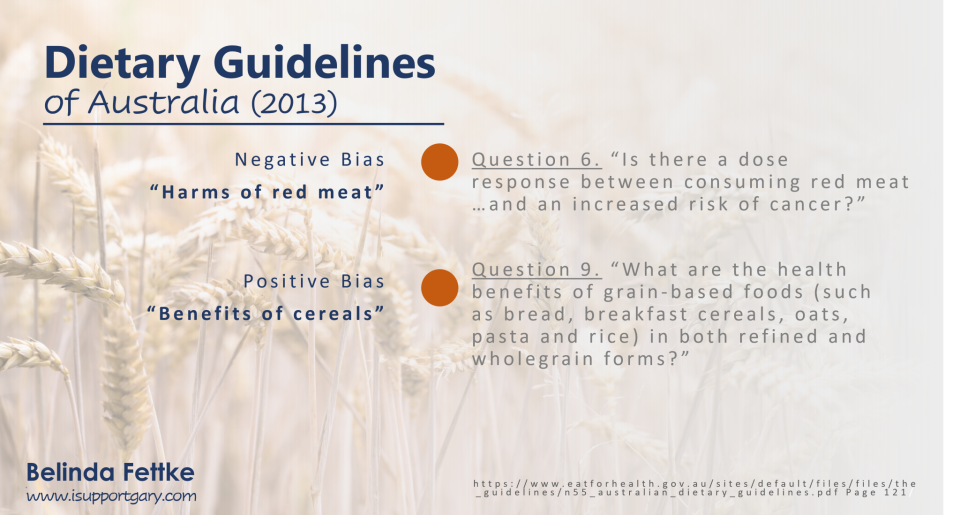
Concerningly, in 2013, as Gary regularly points out… rather than asking for a balanced risk/benefit review presenting both sides of the debate, the research questions posed by the NHMRC were completely biased from the outset, creating a data bank of statistical analysis by the DAA focusing only on the harms of red meat and the benefits of cereal consumption.
Where has the bias come from?

There were two factions debating the cause of heart disease back in the 1960’s. John Yudkin, founder of the nutrition department at the Queen Elizabeth College, London, believed sugar and high fructose corn syrup, were the culprits, while Ancel Keys, of the University of Minnesota, defended his cholesterol hypothesis - blaming saturated fat.
I am not going to go into concerns about Key’s 7 Country’s Study nor the Sugar Industry’s funding of Harvard researchers in this article, but I highly recommend reading Gary Taubes, Nina Teicholz, and Zoe Harcombe’s work.
I want to focus on the guidelines.
There is no doubt, American clinicians defended Keys.
Prominent nutritionists, and the Sugar industry, were determined to destroy Yudkin’s reputation, and his career never recovered. Which was bad news for Australians… Let me explain
Incredibly, when Professor John Yudkin retired from his post at Queen Elizabeth College in 1971 to write his book, Pure, White and Deadly, the college reneged on their promise to allow him to continue to use its research facilities.
In the meantime, they had hired a fully committed supporter of Ancel Keys to replace him.
US Dietary Goals 1977

The Dietary Goals for Americans were published in 1977 and the Dietary Guidelines a couple of years later… demonising saturated animal fats in the diet. They also minimised the harms of sugar, while praising cereals and grains, gifting the food industry an incredible opportunity to reformulate, and create, even more highly processed Low-Fat High Carbohydrate products.
Ian Leslie, a reporter at the Guardian made the comment “Consumers dutifully obeyed. But instead of becoming healthier, we’ve collectively grown fatter and sicker. At best, we can conclude that the official guidelines did not achieve their objective; at worst, they led to a decades-long health catastrophe."
Unfortunately, The idea that saturated fat is unhealthy has been so ingrained in our culture it’s seen as simply “common sense” even though the science doesn’t support this.
The 'fear of fat' worked its way into medical curriculums in the 80’s teaching generations of medical professionals to 'fear cholesterol.'
Zoe Harcombe’s PhD study highlighted the fact that Cholesterol is something so utterly vital to life, our bodies can make it.
She says…
"If you had no cholesterol in your body, you’d actually be dead."
You’d have; - "no cells, no bone structure, no muscles, no hormones, no reproductive system, no digestion, no brain function, no nerve endings. There would be no human life!"
Blame the Fat
Let me introduce you to Professor Stewart Truswell who succeeded John Yudkin as head of the Department of Nutrition in 1971. Looking back to that time (in a talk he gave at the proceedings of the Nutrition Society of Australia in 1995) he states:-
“Public Health Nutrition seemed to be drifting without a compass…”
(BTW, John Yudkin didn’t think so)
“Carbohydrates had bad press” and “Low Carbohydrate diets were fashionable for treating obesity!” Exclamation Mark - I presume he is referring to the Atkins diet.
After the US dietary goals were published in February 1977 he “… tried to pass on his enthusiasm for them in Britain, but the ‘establishment’ was unmoved” So what did he do???
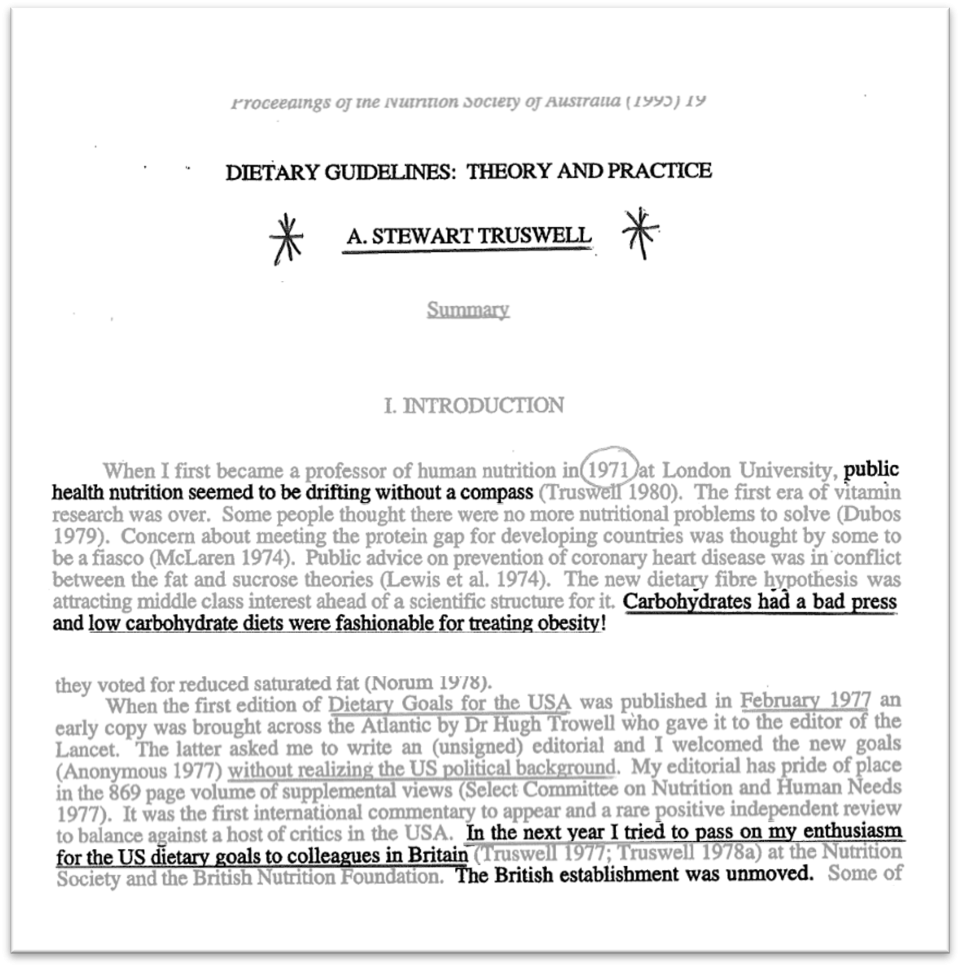
He came to Australia!!!! In 1978.
Before I go further, I want to thank Rory Robertson. His research into Sydney University and their Conflicts of Interest with industry are phenomenal! His website is called “The Australian Paradox” and the information I am sharing about Stewart Truswell and the beginning of Australia’s dietary guidelines comes from him.
Truswell continues… “I came to Australia to start the Chair of human nutrition at Sydney University in 1978 and one of the new ideas I brought with me was… dietary goals”
There was a large seminar organized by the Dietitians Association of Australia that year, so he says he had an opportunity to explain the concept and they set up a committee. "We asked for some feedback but received very few replies so decided to draft ourselves a set of dietary guidelines which they presented at a 2-day conference on Nutrition in 1979… with support… from the food industry.”
Apparently… the setting was conducive to a positive reaction. (I’m not surprised)
Truswell continues; - "After they had been launched, the goals were presented to the National Health & Medical Research Council. Apparently ‘the NHMRC’ expressed disappointment they had not been involved earlier but despite this, they adopted the goals - unmodified."
"We asked for some feedback but received very few replies so decided to draft ourselves a set of dietary guidelines which they presented at a 2-day conference on Nutrition in 1979… with support… from the food industry.”
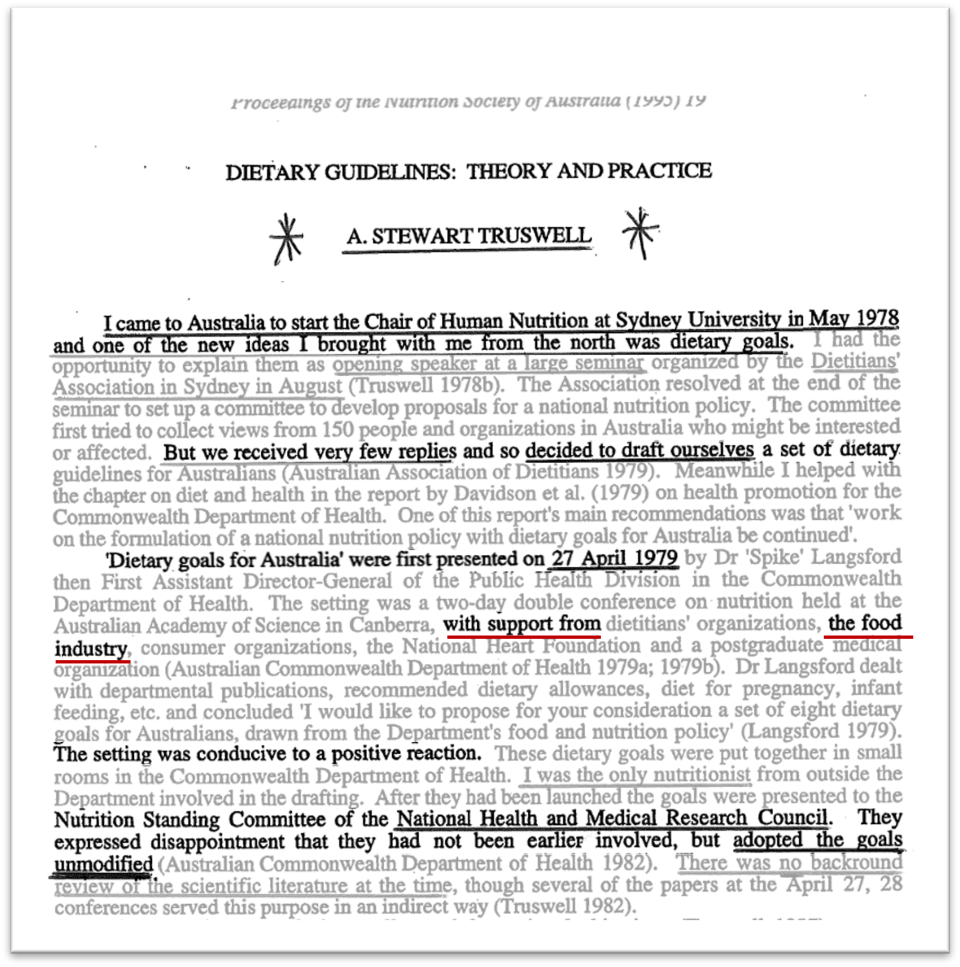
He claims there was no background review of the scientific literature at the time…
Truswell makes the comment: - “The Australian Dietary Guidelines were accepted so well because the scientific nutrition establishment was small and new.
Apparently… “Dietary guidelines are popular with governments because they are cheap…” "Call a committee for a few meetings, it costs a few airfares, some secretarial work, publish the report commercially, and sit back and wait for the incidence of chronic disease to decline.”
He goes on to say; - "Cardiovascular Disease seems to have responded well to the dietary changes."

Has he read this?? … The Australian Institute of Health and Welfare doesn’t seem so positive. Their report states CVD was the underlying cause of 42,300 deaths which equates to one-quarter of all deaths in 2019.
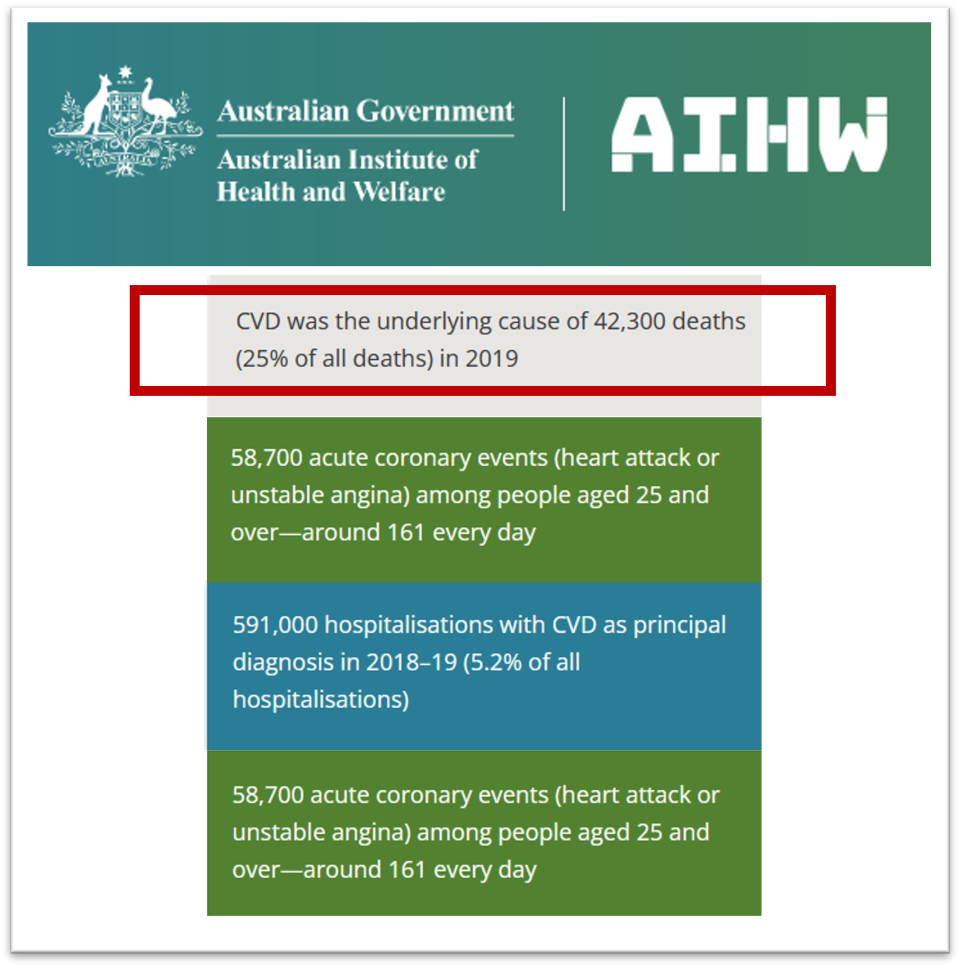
Truswell does seem a little concerned that: - “against these satisfying statistics there has been little change in most cancers and AN INCREASE IN OVERWEIGHT AND OBESITY.”
(No mention… as Rory has noted, about smoking decreasing and potentially correlating to a decrease incidence of CVD - nor any mention of the rise of Type 2 diabetes from all the processed carbs we are now told to eat)
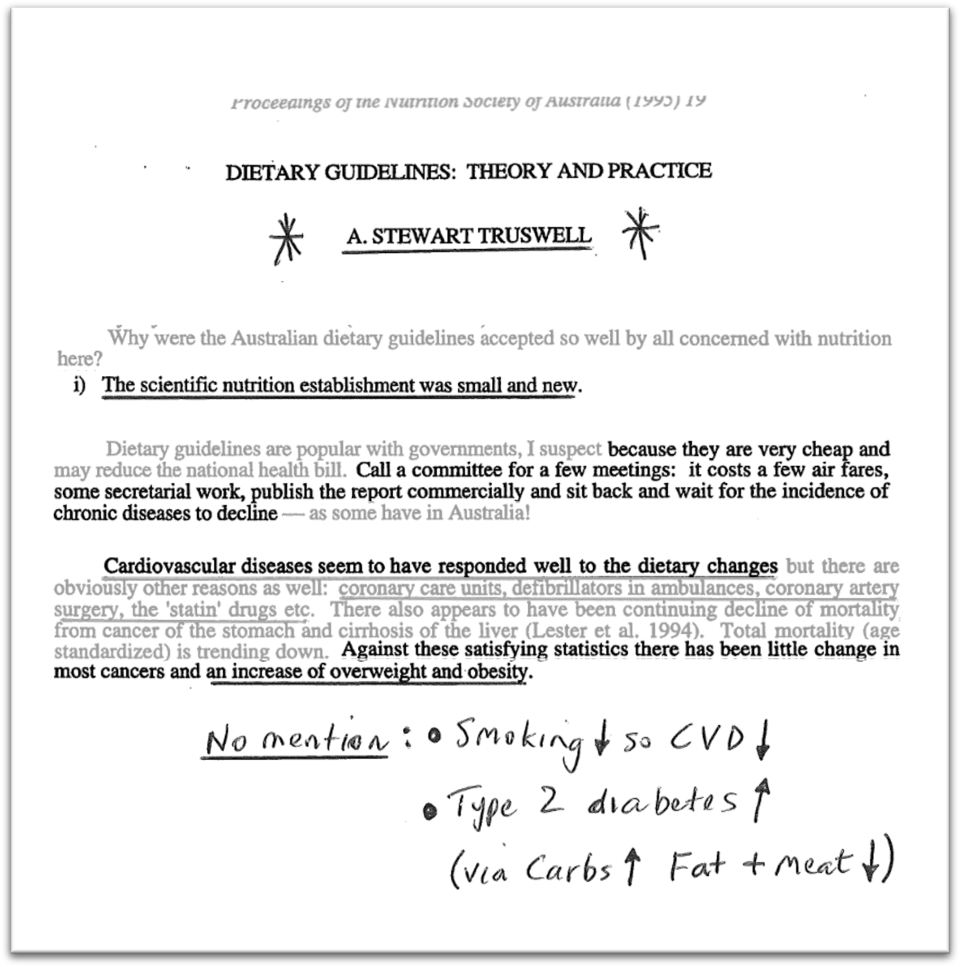
We’ve followed the Guidelines
As Nina Teicholz demonstrates below, we have followed the guidelines…
“To blame obesity, diabetes, and other nutrition-related diseases on saturated fats or red meat is strongly contradicted by this data.
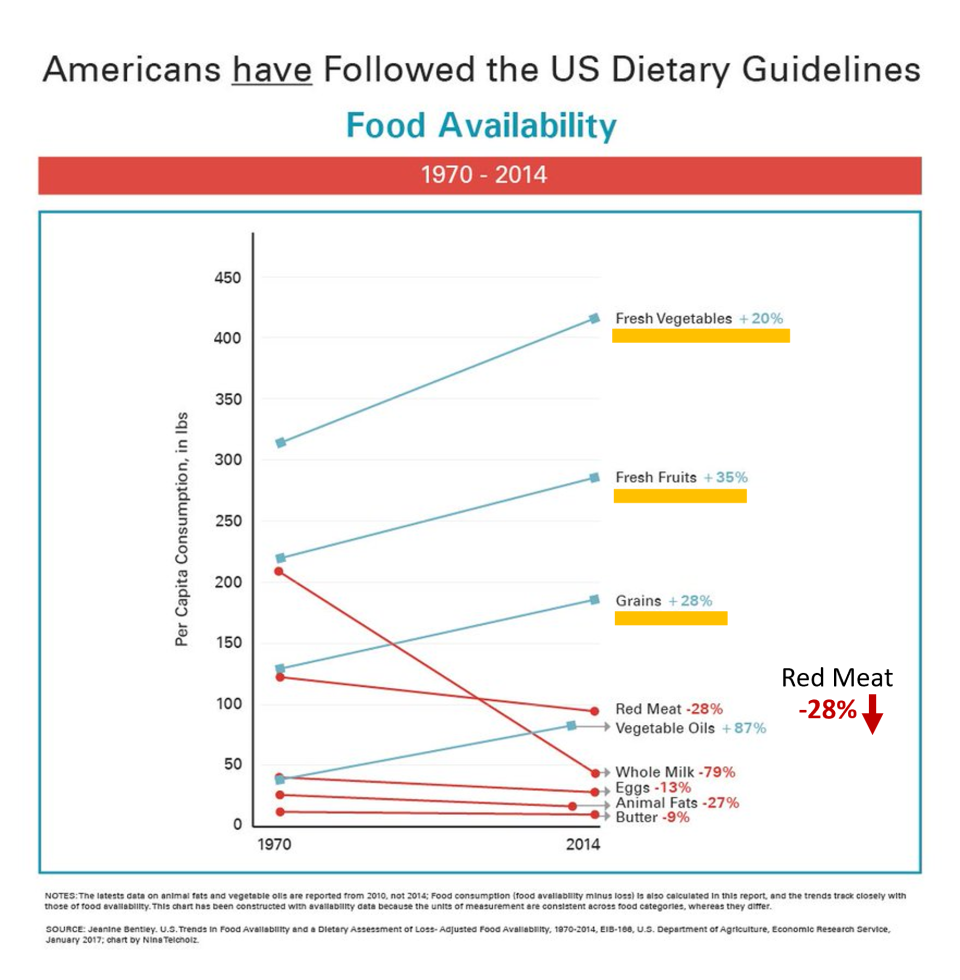
"To suggest that more fruits, vegetables, whole grains, fish and nuts will somehow be a panacea for health are also contradicted by this data.”
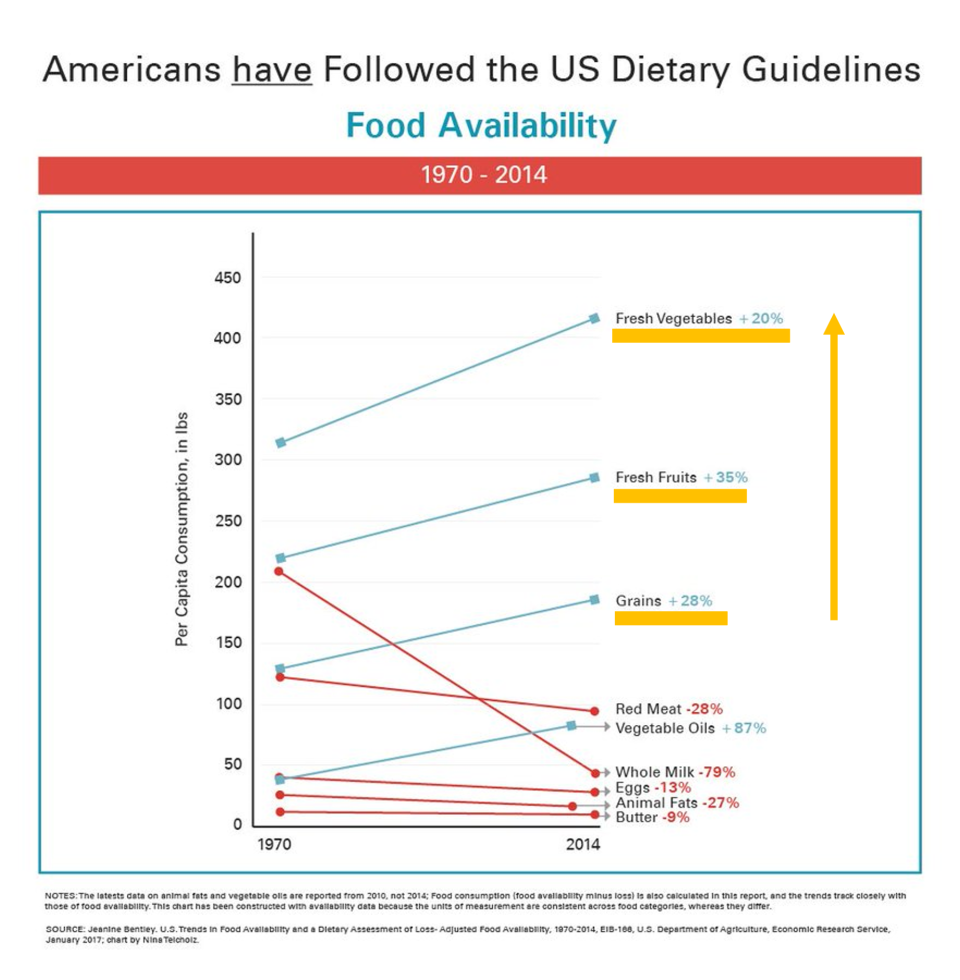
Even the United States Department of Agriculture acknowledges the rise of ‘added fats and oils’ since the 1970’s, when we were encouraged to use poly-unsaturated seed oils and hydrogenated trans fats instead of saturated animal fats in our diet.
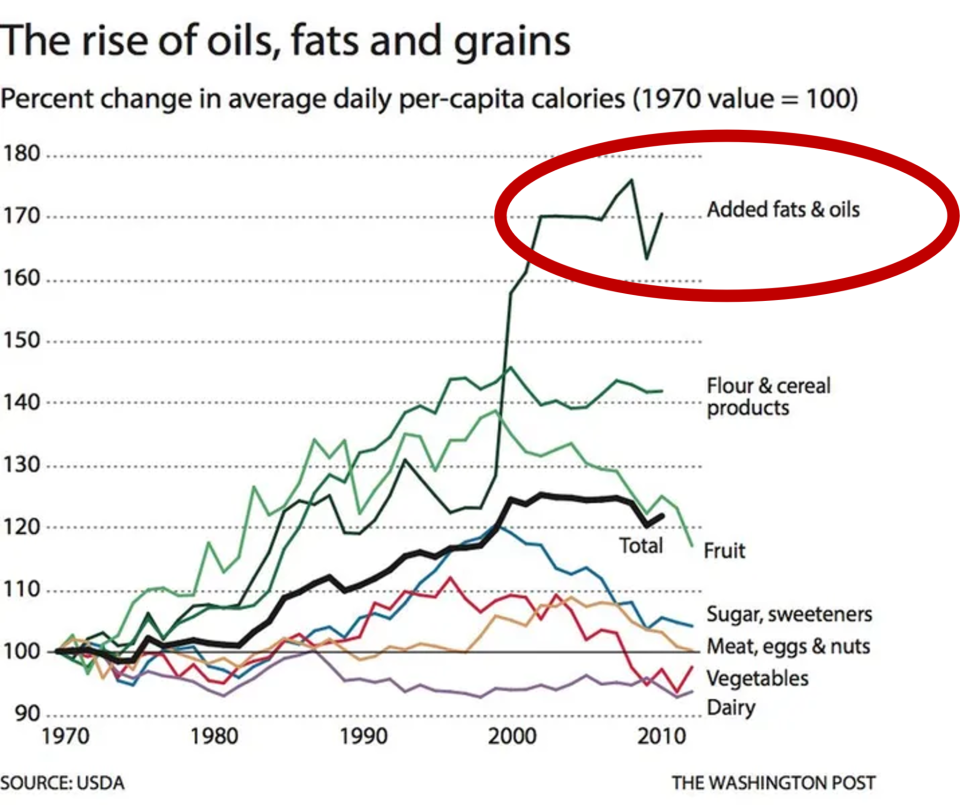
The increasing incidence of Type 2 diabetes since the introduction of the US Dietary Guidelines is also demonstrated in Sarah Hallberg’s 2014 graphic.
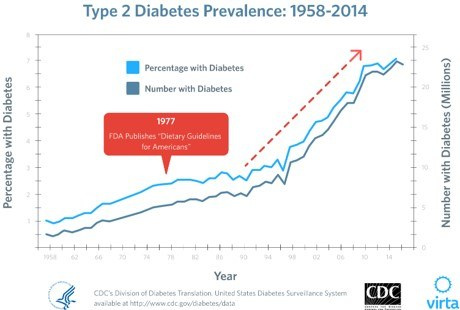
Despite all this evidence, Stewart Truswell was still claiming, in 2013:- “Leading nutritionists in the US and Europe never took up the sugar and coronary heart disease theory.” And he makes the point of finishing with the statement:- “In the UK, Yudkin’s peers were concerned and sometimes embarrassed.”
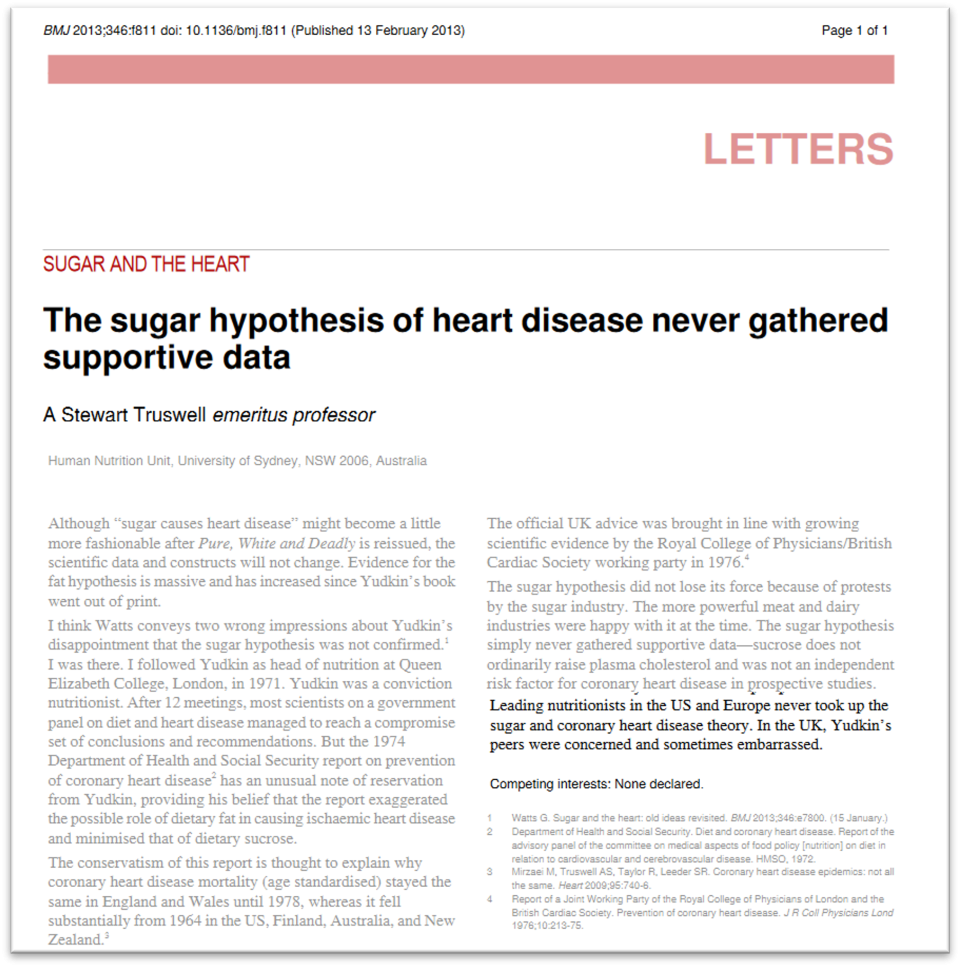
It's the Sugar!
In 2018 a 'summary of the evidence around the competing theories of fat, sugar, whole grains and Coronary Heart Disease’ was published, suggesting ‘they’ have known since 2014 that the role of Saturated Fats in the causation of Coronary Heart Disease has been much exaggerated, whereas, refined starches, added sugars and sugar-sweetened beverages cause an increase in risk factors.
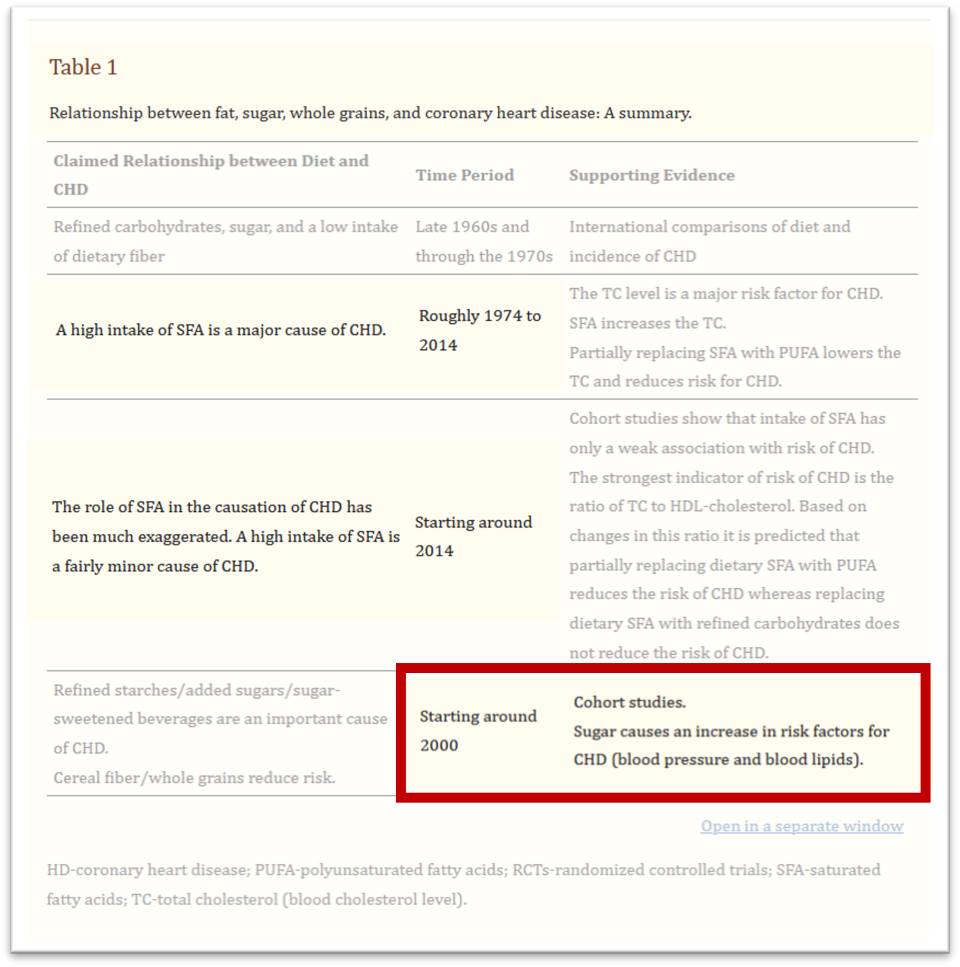
Seems John Yudkin may have been right, after all...

